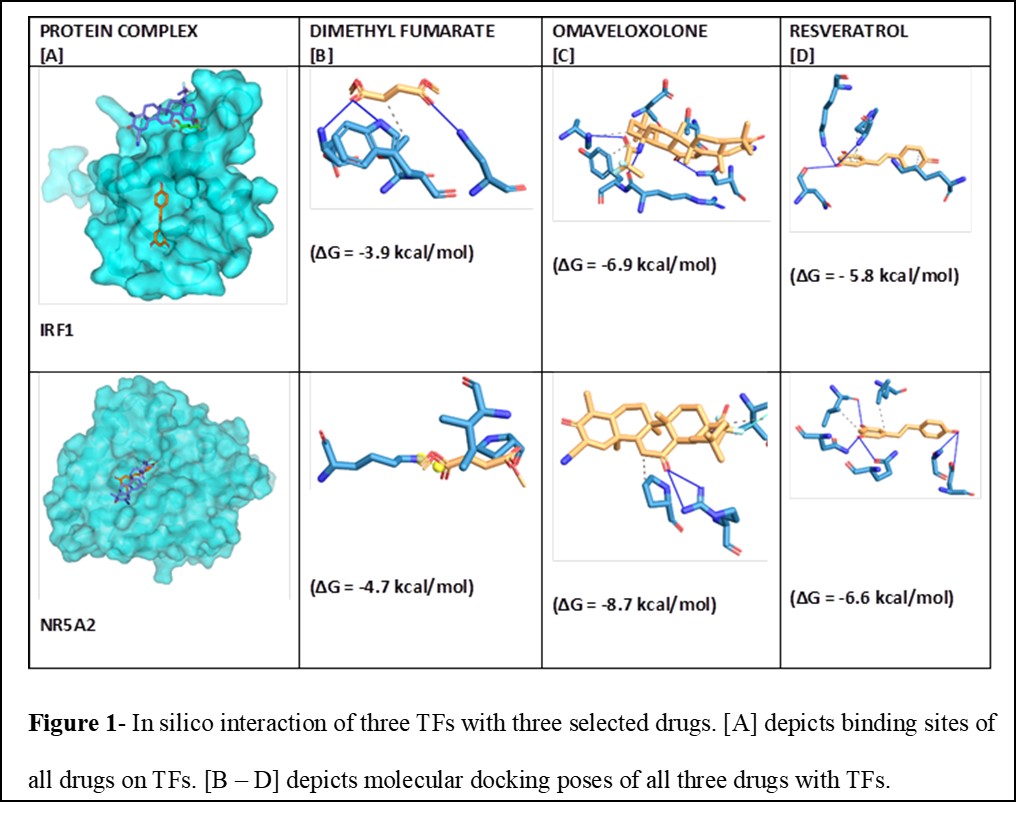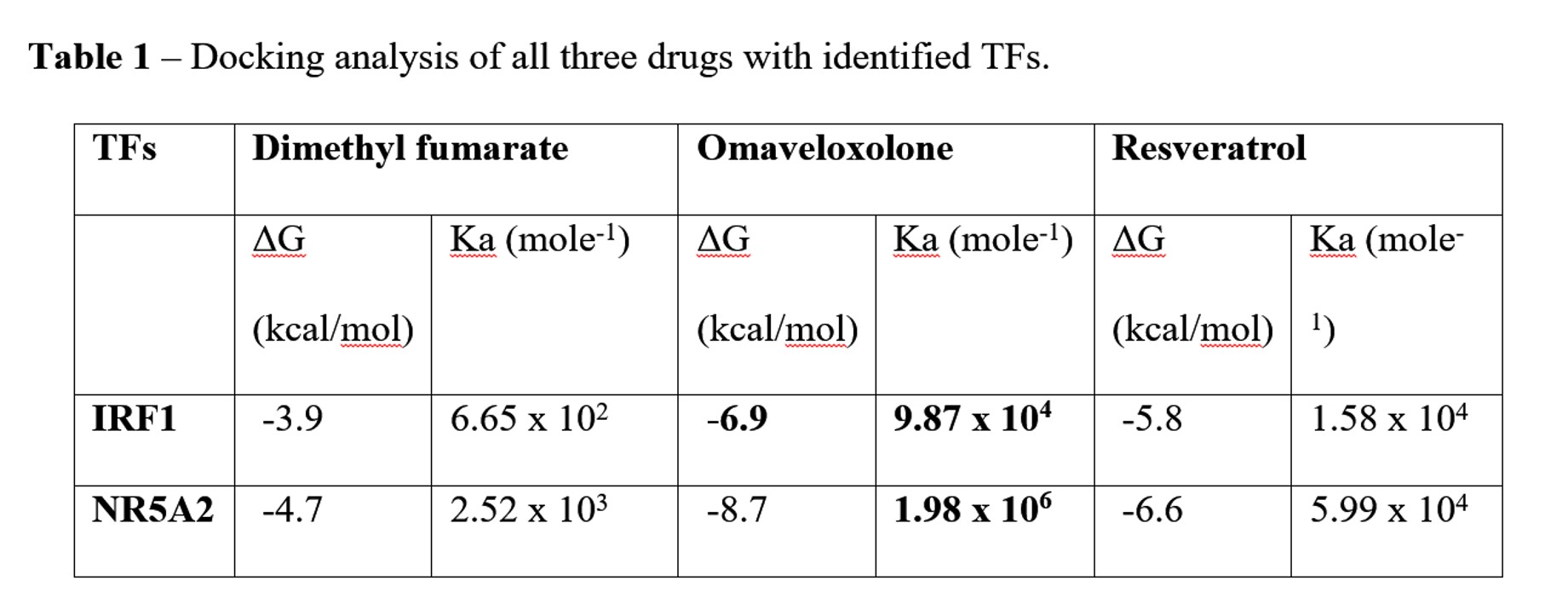Category: Ataxia
Objective: To investigate interactions of transcription factors (TFs) binding to repressor region located upstream to FXN gene with leading therapeutic molecules.
Background: Low levels of frataxin protein are responsible for Friedreich’s ataxia (FRDA). Expanded intronic GAA repeats and aberrant regulation of transcription are key reasons for low frataxin levels. Eight highly conserved regulatory regions affecting FXN levels were reported by Puspasari and cowerkers1. TFs binding to these regulatory regions can be potential targets for therapeutic drugs under development/clinical trials.
Method: TFs binding to repressor region (chr9:70831172-70831343)) were identified using JASPER database. Drugs were selected from curefa.org2, an authentic database of therapeutic molecules under trial in FRDA. TFs (IRF1, NR5A2) were modelled using SWISS-MODEL. Ligands (dimethyl fumarate, omaveloxolone and resveratrol) were extracted from the PubChem Online ligand repository and their structures were converted into the pdbqt format using OpenBabel software. Molecular docking simulations were performed by Autodock Vina Software. After docking, the structures were examined by Protein-Ligand-Interaction-Profiler (PLIP) web server and tabulated for comparison.
Results: Two TFs, IRF1and NR5A2 were identified from JASPER database and three drugs, dimethyl fumarate, omaveloxolone, and resveratrol were selected. The molecular docking results showed that the omaveloxolone had the strongest binding constant (Ka, x106 mole-1) than resveratrol (104 mole‑1) and dimethyl fumarate (103 mole‑1) (Table-1). The dimethyl fumarate and resveratrol showed overlapping binding regions and dimethyl fumarate and omaveloxolone showed little similarity in binding with IRF1 (Fig.1).
Conclusion: In this maiden in silico molecular docking study, the TFs binding to the repressor region was assessed to molecules under investigations for FRDA treatment. High Ka resulting from strong interactions between omaveloxolone and TFs indicate that the former may also interact with repressor regions and demonstrate its potential in therapeutics beyond its role in reducing oxidative stress in FRDA. However, in vitro experiments are needed to validate these results.
References: 1 Puspasari et al., Long range regulation of human FXN gene expression. PLoS One. 2011;6(7):e22001.
2. https://curefa.org/pipeline.
To cite this abstract in AMA style:
V. Swarup, H. Singh, D. Gupta, I. Singh, A. Srivastava. Leading Therapeutic Molecules Target Transcription Factors Binding to Repressor Region in FXN Gene [abstract]. Mov Disord. 2022; 37 (suppl 2). https://www.mdsabstracts.org/abstract/leading-therapeutic-molecules-target-transcription-factors-binding-to-repressor-region-in-fxn-gene/. Accessed December 21, 2025.« Back to 2022 International Congress
MDS Abstracts - https://www.mdsabstracts.org/abstract/leading-therapeutic-molecules-target-transcription-factors-binding-to-repressor-region-in-fxn-gene/


